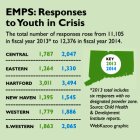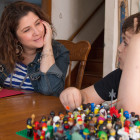Disparities
Legislative Wrap Up: Bills Passed To Stem Substance Abuse, Reduce Restraint Use
|
Lawmakers this session approved bills that put in place new initiatives to stem substance abuse and opioid overdoses, change the way restraints and seclusion are used in Connecticut schools and limit the use of shackles on juveniles in court. Those were just some of the legislature’s health and safety measures reported on by C-HIT during the year. The session, which ended last week, was largely dominated by budget and transportation issues. Under the bills approved:
• Any prescriber supplying more than a 72-hour supply of a controlled substance must first review the patient’s record in a statewide database. In addition, practitioners must review the patient’s record at least every 90 days if prescribing for prolonged treatment.


